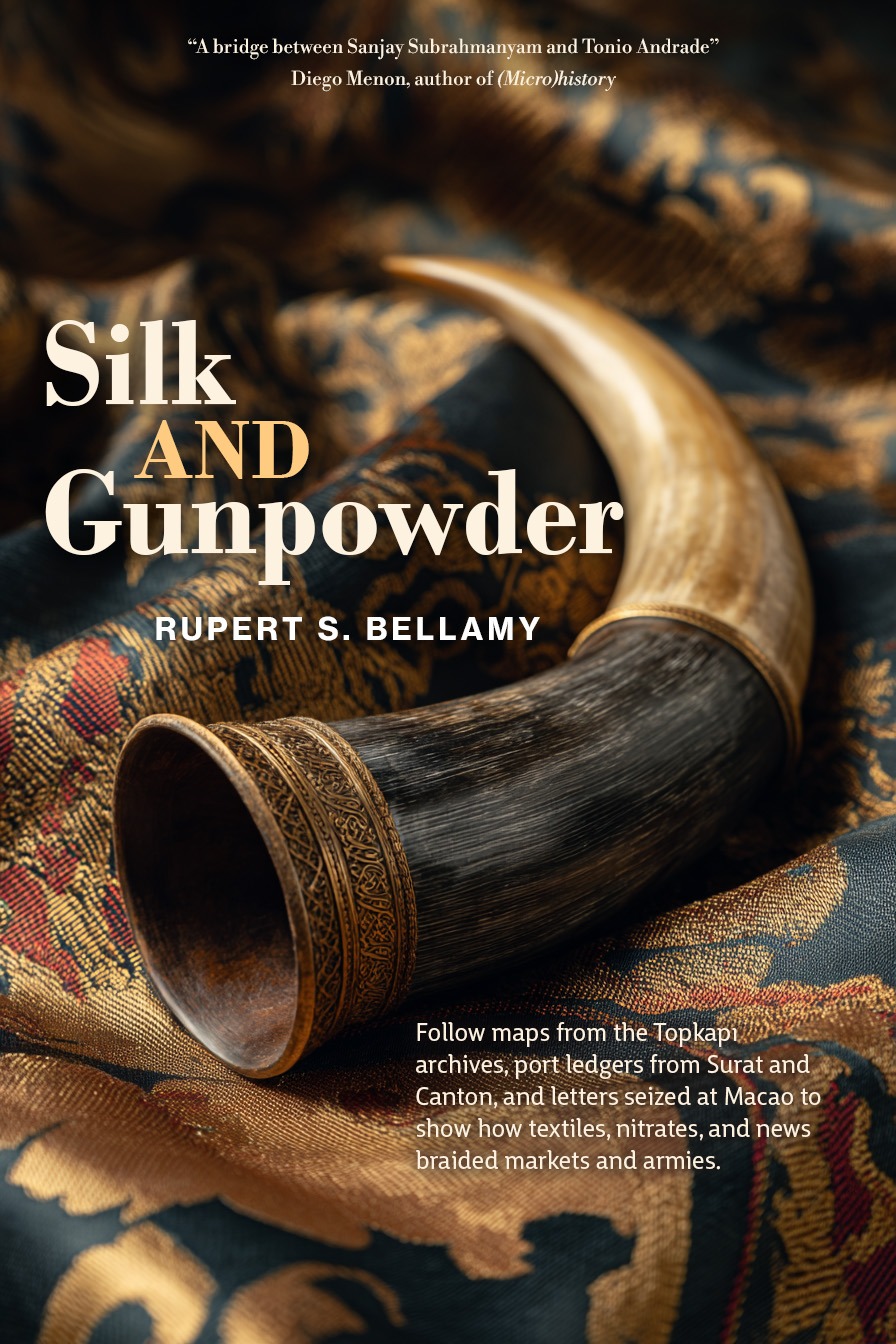From the caravanserais of Samarkand in 1603 to the roar of the Tophane foundries on the Bosphorus, and from Aurangzeb's batteries before Golconda to the tea warehouses of Whampoa in 1842, the early modern world was remade by the entwined forces of silk and gunpowder. Here, the histories of overland caravans and maritime convoys, of Ottoman, Safavid, and Mughal arsenals and the industrial navies that forced the Pearl River, are brought into a single narrative sweep. At the heart of each transformation lies an epic journey: Jean-Baptiste Tavernier's jeweled route from Isfahan to Surat and Versailles; Evliya Çelebi's circuits from Edirne to Khotin alongside bronze culverins and saltpeter wagons; and Lin Zexu's austere passage from Guangzhou to Ili after he consigned British opium to the flames at Humen. Told in tandem with these are the travels of things themselves — Kashan-stamped silk bolts, matchlocks cast at Tophane and imported through Tula, galleasses and steamers laid up at Whampoa — whose movement shifted the balance of wealth and war.
The testimony they left behind — Tavernier's six voyages, Evliya's Seyahatname, Lin Zexu's memorials — made dockside and courtly worlds legible from Paris to Pera and Canton. Featuring a stellar cast, from Shah Abbas and Kara Mustafa to Surat's banians, Shamian's lightermen, and the financiers of the Fondaco dei Turchi, this history follows maps from the Topkapı archives, port ledgers from Surat and Canton, and letters seized at Macao to show how textiles, nitrates, and news braided markets and armies. With extraordinary drama and an epic reach, Silk and Gunpowder raises urgent questions about technology and extraction, the bargains of empire, and the role of the witness in turning violence into knowledge — questions that press on our own age of supply chains and surveillance.
